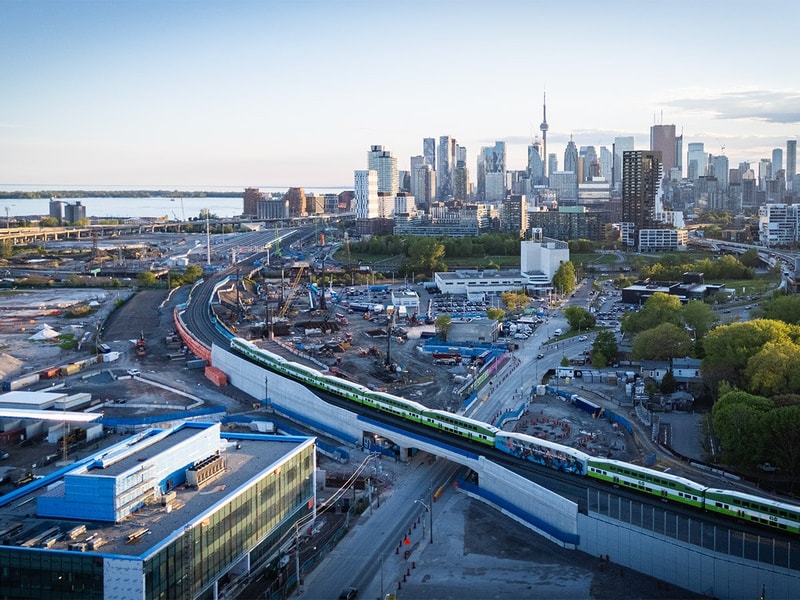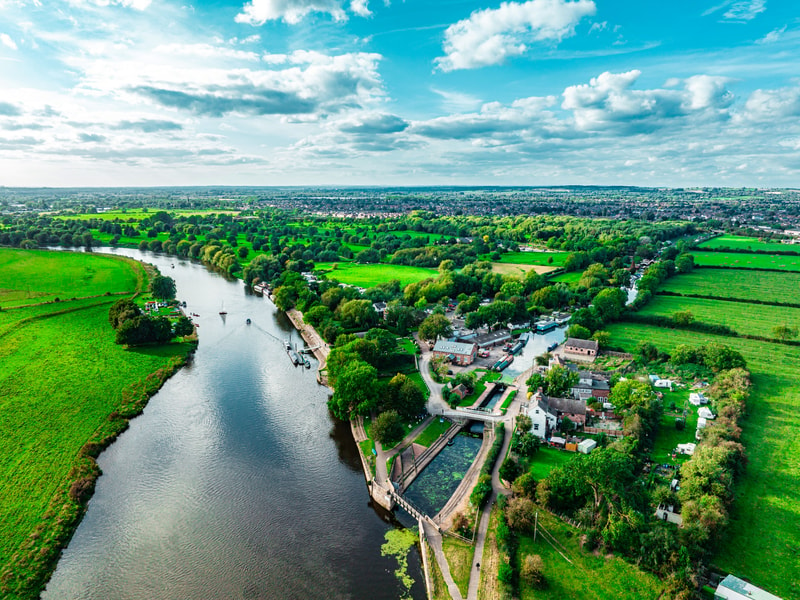How can the UK’s nuclear energy sector power up rural communities?
As nuclear becomes an even more integral part of the UK’s built environment, being able to deliver lasting value to society is more imperative than ever before. Our Director for Resilience, Rachel O’Donnell, examines the opportunities to impact communities positively.

Key takeaways
Advanced Nuclear Technologies (ANT) can transform nuclear energy into a key remote energy source
Nuclear projects in rural regions create high-quality, long-term jobs, boosting local economies
Engaging local supply chains during construction phases improves prosperity for rural communities
Energy as a sector is at the centre of the UK’s Net Zero ambitions and decarbonising the sector is the only way to reach long term targets. As a result, nuclear energy will have a significant presence in the industry’s future landscape.
This is going to require a step change in how we approach energy, and nuclear energy in particular. The arrival of Advanced Nuclear Technologies (ANT) will change the way in which nuclear energy is viewed; it will go from requiring gigawatt major installations that take many years to being a key local energy source, which will become much more predictable and easier to get to grid than traditional gigawatt reactors.
A longstanding priority for major infrastructure projects of any kind has been to deliver social value to the communities in which they operate. Social value can be defined as a positive impact to society, the economy and the environment. In this respect, rural communities are historically underserved and in desperate need of support and investment. Recent research from EY and the County Councils Network found that rural areas are still significantly behind in their recovery from the pandemic, when compared to urban centres. The question then is: how can the nuclear sector authentically create greater social value in these deprived locations?
Going local on jobs and supply chains
A central priority of large programmes in rural locations should be the creation of high quality and long-term local jobs. We are seeing the nuclear energy sector prioritise programmes in regions such as the Northwest. This region in particular has set a standard for concentrating nuclear activity and skills, with six existing nuclear licensed sites in region, including three nuclear power station sites. Alongside this, the Northwest already has 178 separate nuclear-focused businesses and the UK’s largest nuclear talent force of over 25,000 engineers, scientists and specialist researchers. It is just this type of consolidation within a region that meets local needs for longer-term job security and employment programmes that evolve with their ambitions. It is critical that the employment strategy identifies transferrable skills and supports people to transition across the phases of a nuclear project’s lifecycle and continue to develop in their careers.
Whilst these projects will enhance communities with direct jobs, the way to evolve this further is for developers to build a more holistic approach to economic generation that brings in a localised supply chain strategy
At construction phase, clients and their delivery partners will need to engage and drive local supply chains to share in the economic prosperity brought by the development. It is true that many SMEs are not currently equipped to provide the quality and scale of resources needed. The decommissioning phase of Sellafield trialled a county-wide ‘trade mission’ in 2018 to begin building these links and it is clear that further outreach will be needed to create the desired engagement of SMEs. Large scale nuclear developments can work alongside these local businesses, through organised regional groups such as the BECBC, Northern Nuclear Alliance, to understand the required investment and knowledge sharing required to become enduring supply chain partners.
Building the future nuclear workforce
The rural demographic with the most pressing need for revitalisation and inspiration is young people. A report from the CPRE cites extensive dissatisfaction from 16-25 year olds living in rural areas. In fact, 84% of young people said that there is a lack of wider employment opportunities, with a mere 18% believing there is a bright future for them in these communities. Projects can go beyond instant employment opportunities and embed themselves in communities from the construction phase through local educational programmes.
The goal must be to provide resource and expertise to future generations on the high value jobs and STEM skills that are required to operate a nuclear plant. This can take the form of workshops and creative schemes that inspire and excite school pupils, but also holding clinics with educators to shape the curriculum around key skills and cement the link between education and careers. An example of a successful scheme is the work done by the UK Atomic Energy Authority (UKAEA) and their Oxford Advanced Skills Centre in Culham. This scheme gives development opportunities to 180 apprentices each year, with 25 different employers in the sector.
This is vital in rural areas, where there are many factors that disrupt access to higher education such as travelling outside of the area for Russell Group universities and anxiety around student debt due to poorer socioeconomic circumstances. Making these links to institutions early on and then throughout a programme can spark the inspiration to pursue roles in the nuclear sector and continue the pipeline of local talent for the future.
The challenge is to consider the duration of infrastructure projects, from build to decommissioning and to create social value programmes that continue offering diverse opportunities for local employment and skills. This diversity of opportunity should respond to the unique problems facing young people in rural communities.
Energy providers have a gilded opportunity to directly benefit the people in their immediate proximity. Assembling the right team of delivery partners means they can plant their flag early, to deliver a project with far-reaching value to society and build better and more empowered communities.
Related insights
-

Taking New Towns from vision to delivery
Perspective
-

Value for life in the pharma capex boom
Perspective
-

UK market view: Q3 2025
Report



